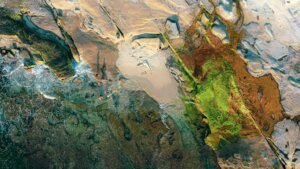Oceans of the World: How many oceans on Earth?
Water covers about 71% of the Earth’s surface, and most of it is found in vast bodies known as oceans. These massive, interconnected waters play a crucial role in regulating the planet’s climate, supporting marine life, and enabling global trade.
In this post, we’ll dive deep into the five oceans of the world, understand their characteristics, importance, and how they connect humanity in more ways than we often realize.
What Is an Ocean?
An ocean is a large body of saltwater that surrounds continents and covers a significant portion of Earth’s surface. Although the world’s oceans are technically one continuous body of water, we divide them into five distinct oceans based on geographical, cultural, and historical boundaries:
- Pacific Ocean
- Atlantic Ocean
- Indian Ocean
- Southern (Antarctic) Ocean
- Arctic Ocean
These oceans are constantly in motion — with currents, tides, and waves — influencing everything from the weather we experience to the air we breathe.
1. Pacific Ocean – The Largest and Deepest
- Area: ~168 million km²
- Average Depth: ~4,280 meters
- Borders: Asia, Australia, North & South America
The Pacific Ocean is not only the largest ocean on Earth, it is also the deepest, containing the famous Mariana Trench, which plunges to over 11,000 meters (36,000 feet) below sea level.
It plays a major role in global weather systems like El Niño and La Niña, and it’s home to vibrant ecosystems including coral reefs, mangroves, and countless marine species.
Fun Fact: The Pacific Ocean is so vast that it could fit all the continents combined and still have space left over!
2. Atlantic Ocean – A Highway for Trade and History
- Area: ~85 million km²
- Average Depth: ~3,646 meters
- Borders: Europe, Africa, North & South America
The Atlantic Ocean is the second-largest ocean and has been central to human exploration, trade, and cultural exchange for centuries. It separates the “Old World” (Europe and Africa) from the “New World” (the Americas).
This ocean is known for its powerful Gulf Stream current, which warms Western Europe, and for being the route of historical voyages such as those by Christopher Columbus and the slave trade routes — shaping modern civilizations.
Fun Fact: The Atlantic contains the Mid-Atlantic Ridge, a massive underwater mountain range that runs through the entire ocean.
3. Indian Ocean – The Warmest and Most Strategic
- Area: ~70 million km²
- Average Depth: ~3,741 meters
- Borders: Africa, Asia, Australia
The Indian Ocean is the warmest of all the oceans and is critical to the monsoon weather systems in South Asia. It has been a key route for maritime trade, especially between India, the Middle East, and East Africa since ancient times.
It’s also strategically important in the modern world due to major shipping lanes carrying oil, gas, and goods between continents. The ocean is rich in marine biodiversity, including whales, dolphins, and coral species.
Fun Fact: The Indian Ocean has limited connection with polar regions, which is why it remains warm all year round.
4. Southern Ocean – The Planet’s Cold Water Conveyor
- Area: ~21 million km²
- Average Depth: ~4,000–5,000 meters
- Borders: Encircles Antarctica
The Southern Ocean, also called the Antarctic Ocean, is the newest named ocean, officially recognized in 2000. It encircles Antarctica and is known for its harsh conditions, strong currents, and icy waters.
This ocean plays a major role in regulating the Earth’s climate and carbon cycle. The Antarctic Circumpolar Current — the strongest current on Earth — flows around Antarctica and helps distribute cold water throughout the global ocean system.
Fun Fact: Despite its icy waters, the Southern Ocean is teeming with life — from krill (a key species in the food chain) to penguins, seals, and even blue whales.
5. Arctic Ocean – The Smallest and Shallowest
- Area: ~14 million km²
- Average Depth: ~1,205 meters
- Borders: Northern regions of North America, Europe, and Asia
The Arctic Ocean is the smallest and shallowest of the five oceans. It is located in the extreme north of the planet and is covered by sea ice for most of the year, though climate change is rapidly affecting that.
This ocean is vital for maintaining Earth’s polar climate and serves as a unique habitat for polar bears, walruses, and Arctic whales. It is also of increasing interest for shipping and natural resource exploration.
Fun Fact: In winter, the Arctic Ocean is almost completely covered by ice, but this is decreasing due to global warming.
Why Oceans Matter to Life on Earth
Oceans are not just bodies of water — they are the lifeblood of our planet. Here’s why they’re essential:
Climate Regulation
Oceans absorb heat from the sun and distribute it around the globe through currents. This keeps temperatures stable and supports different climates worldwide.
Oxygen and Carbon Balance
Over 50% of the oxygen we breathe comes from marine plants like phytoplankton. Oceans also absorb a large portion of carbon dioxide, helping to fight climate change.
Biodiversity
Oceans are home to millions of species, many of which we haven’t even discovered yet. Coral reefs, kelp forests, and deep-sea vents are all teeming with life.
Trade and Transport
More than 80% of international trade is carried across oceans, making them vital to the global economy.
Challenges Oceans Face
Despite their importance, our oceans face significant threats:
- Plastic pollution: Millions of tons of plastic enter the oceans each year.
- Overfishing: Many species are endangered due to unsustainable fishing.
- Climate change: Rising temperatures and acidification threaten marine ecosystems.
- Oil spills and industrial waste: These harm wildlife and contaminate waters.
Protecting our oceans is not just an environmental issue — it’s a human survival issue.
Conclusion: One Ocean, One Planet
Though divided into five named oceans, the Earth’s waters form one global ocean system. They connect continents, sustain life, and hold mysteries we’ve barely begun to uncover.
By learning more about the oceans of the world, we gain not just knowledge, but also a deeper appreciation of our responsibility to protect and preserve this precious blue frontier.






Comments